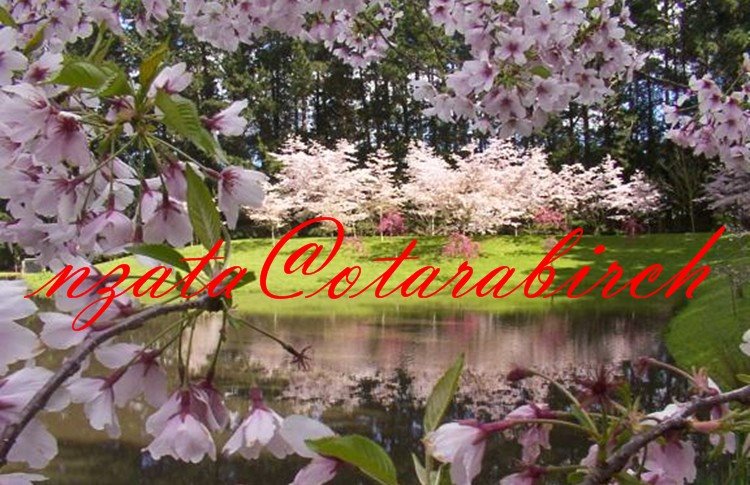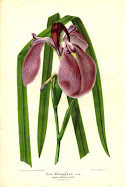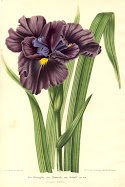 Once your seed has been sown into trays or pots, continue to water then daily to leach out a natural chemical germination inhibitor which coats the seed.
Once your seed has been sown into trays or pots, continue to water then daily to leach out a natural chemical germination inhibitor which coats the seed.The seed will begin to germinate in one's and two's in the first stages and then all hell will break loose and the sand will begin to rise up. Not to worry as you water the sand, it will settle around the germination of seeds. If the seed becomes exposed then just add a little more sand to cover that area.
Your little rice paddy has begun.
Once the seedlings get to about 4 cm (1 1/2 in) in height, I use the pointed end of a teaspoon to carefully lift each seeding from the seed tray.
With your finger and thumb of one hand you can easily pick up the foliage of the seedling and move the seeding into individual pots.

In advance I pre-fill my pots with a moist potting mixture and using the teaspoon I make a hole in the mix to accommodate the new seedling placing the roots deep into the soil mix leaving the green foliage above. The seedlings are then watered in with the watering can. I give then a watering daily and begin a light fertilizer programme of a weak solution of Phostrogen all purpose soluble food. Use every 7 days to feed the foliage and growing roots of young seedlings.
They grow quite fast once they have germinated and if they get away on you, clip the tops of the seedlings back to about 4 cm high ( 1 1/2in), then prick them out of the tray into individual pots.
The roots may be staring to get quite long and string like so I trim these back a little too with the scissors to give the young seedling some balance with transpiration and reduce the shock of the move.
 Once the plants become well rooted in the pots they are ready to line out in your open ground area to grow on. This will be early summer planting.
Once the plants become well rooted in the pots they are ready to line out in your open ground area to grow on. This will be early summer planting.I place my pots on a bed of sand as the roots can then take up more moisture from the sand as required if a watering is missed that day.
Once you have pricked out the number of seedlings you need, you can then calculate the area of ground needed to plant them out in.
If you have sown a random mixture of seed then just select the biggest and the strongest of seedlings in the tray as they just keep on coming. You will need to be firm with yourself and discard the rest of the germinating seedlings once your number has been achieved.

I use the calculation of one plant per 40cm (16in) apart in a row and space my rows 60cm (24in) apart. Once you know the size of area you can begin to either cultivate the soil or spray out the marked area with roundup to kill off weed growth. When the area of weed growth has began to show signs of dying off, cover the area with a thick blanket of barley straw 12 cm to 15 cm ( 5 to 6in) or pine needles.
What you take away... mother nature wants to put back. This cover will stop more weed germination again while helping you to control future weeds.
Large areas can be cultivated ready for the planting of your seedlings once they are about 25 cm - 30 cm (10 - 12 in) high. Do not be to worried if they grow taller than this if weather does not allow you to begin planting out, you can easily cut back the tops before planting.
Additional Information.
In the book "The Japanese Iris" by the Late Currier McEwen, there is notes on handling seeds and growing of seedlings for those living in the United States where seasons of growth are quite short and prolific. He discusses the growing of seedling both outdoors and indoor under lights.
In 'The Review", a publication of The Society for Japanese Irises. The fall issue of 2001 has a great article written by John Coble, of Michigan. It is titled "How to become a Hybrider " is which John writes about how he handles his seed and soaking of seeds before chilling in the refrigerator and growing under lights also planting outside for spring germination.


















